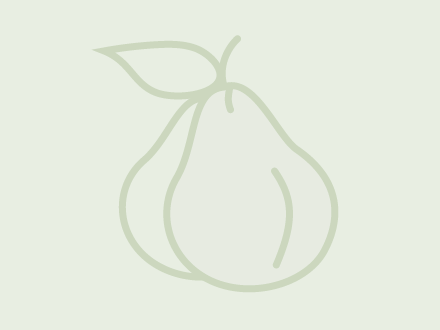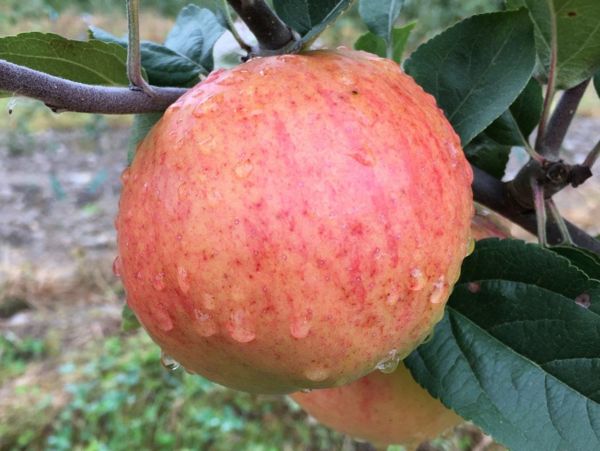An attractive, highly disease-resistant apple, ideal for organic growers.
Gin Pear Scionwood (Spring 2024)

A late-season, sharp perry pear from England.
This traditional English cider pear will grow vigorously when young and, although biennial tending, it crops heavily on its good years. Its habit is somewhat spreading and it is resistant to scab and canker. Gin is used exclusively in cider production; it is not suitable for fresh eating.
The fruit is small and globular with a skin that is green, flushed orange, and slightly russeted around the stem and calyx. The flesh contains some stone cells around the core. Gin keeps well for a perry pear, and it can be milled up to three weeks after harvest. The juice contains moderate tannins and acids. (From Brooks and Olmo: acidity 0.42, tannins 0.15, specific gravity 1.052; higher concentration of citric acid than other perry pears (>.3%).)
The Gin pear is among those perry pears that are named after alcoholic spirits, possibly to indicate the potency of the cider it produces.
Volume Pricing
| Quantity | Gin Pear Scion |
|---|---|
| 1 | $12.00 |
| 2-5 | $7.00 |
| 6-10 | $6.00 |
| 11-99 | $5.00 |
| 100+ | $4.00 |
The Fruit
Fruit Type
Category: Pear
Subcategory:
Perry
Fruit Uses & Storage
Uses: cider
Cider classification: sharp
Storage duration: (approximate, depending on storage conditions)
Fruit Appearance
Skin color: green
Flesh color: off-white
Fruit Origins
Parentage: unknown
Origin: Gloucestershire, England
Introduced in: 1800s
Introduced by:
The Environment
Calendar & Geography
USDA zones: 5 - 7
Chill hours: Not yet determined
Ripening date: Sep 09 (approximate, in New York State) + 20 days after Bartlett
Diseases & Pests
glossary
Pear Scab: Resistant
Perennial Canker: Resistant
Powdery Mildew: Resistant
Pollination
Pollination Factors
glossary
Bloom group: 3
Is it self-fertile? N
Is it fertile? Y
Ploidy: Diploid
Pollination Partners
This table shows the first few results from a full search for pollenizers of Gin Pear. Please see our Pollenizer Search to run other queries and read how the application uses various factors. Also read more about fruit tree pollination.
| Tree | Currently in Stock |
|---|---|
| Winnal's Longdon Pear | 0 |
| Brandy Pear | 0 |
| Yellow Huffcap Pear | 0 |
| Butt Pear | 0 |
| Hendre Huffcap Pear | 0 |
See all pollination matches for Gin Pear
Featured Products
A few things we're loving right now...
A full-flavored, freestone white peach.
A traditional semisharp cider apple from Spain.
A widely-grown, large, yellow-fleshed nectarine.












